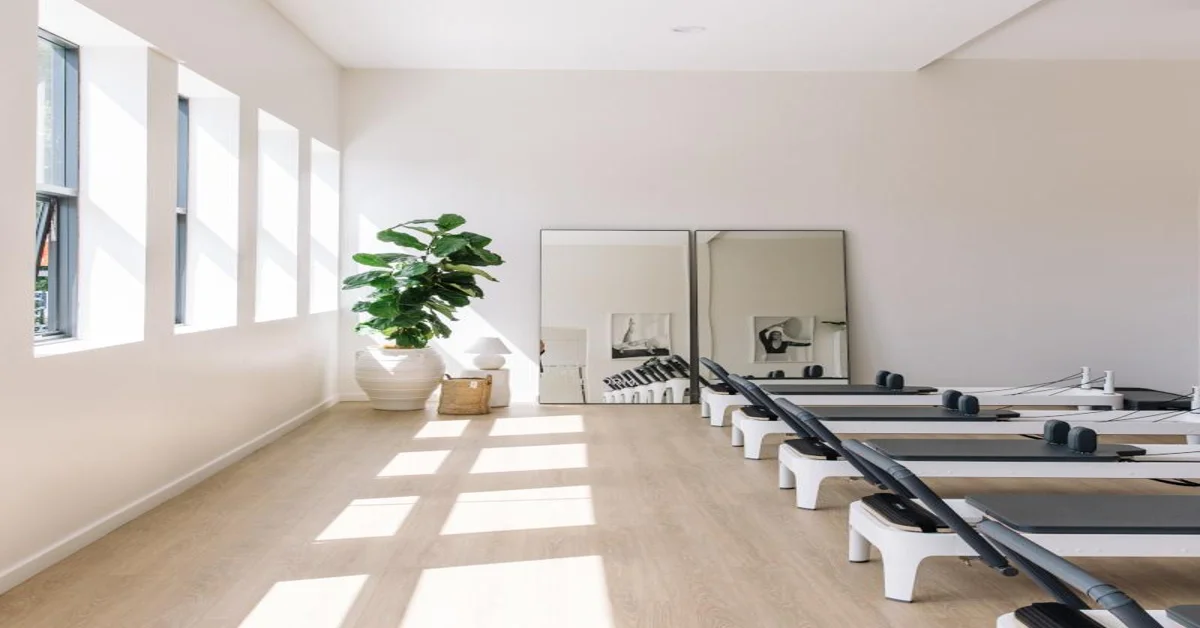So, you come home, cook dinner, sleep, wake up again, go to work, and come back home, and it’s the same tiring cycle. And on top of that, juggling relationships, maintaining friendships, and ensuring your bosses are pleased with you 24/7: it can leave your bodies and minds in a state of tension and fatigue. Whether it’s the tight shoulders from sitting at a desk or the restless thoughts that come from a busy schedule, finding balance can feel a little challenging. That’s where Pilates comes in—a fitness practice designed to harmonise physical strength with mental clarity.
Pilates is not just a workout; it’s a mindful movement system that caters to every fitness level and body type. No matter if you’re a complete beginner or a seasoned athlete, it offers something unique: a blend of core strengthening, improved flexibility, and a calming mental escape.
In this guest post, we’ll discuss how Pilates classes can transform your approach to fitness, making wellness more accessible, enjoyable, and sustainable for everyone. From boosting your physical capabilities to enhancing your mental resilience, discover why Pilates is the key to unlocking a healthier, more balanced you.
The Dual Impact: Physical and Mental Transformation
These classes stand out for their comprehensive benefits, blending physical exercise with mental relaxation. Below, we’ll break down how they contribute to both aspects.
Physical Benefits of Pilates Classes
1. Core Strength and Stability
The foundation of Pilates lies in engaging the deep core muscles. Strengthening these muscles supports the spine, improves posture, and enhances stability during daily movements, from walking to lifting objects. A strong core also reduces the risk of injuries and chronic pain.
2. Flexibility and Mobility
Pilates incorporates stretches and exercises that lengthen the muscles, improving overall flexibility. Over time, these movements increase the range of motion in joints, alleviating stiffness and preventing injuries.
3. Injury Recovery and Prevention
Pilates is often recommended for rehabilitation due to its low-impact nature and emphasis on proper alignment. It strengthens weaker areas while avoiding excessive strain, making it an effective tool for recovering from injuries or preventing new ones.
Mental Benefits of Pilates Classes
- Stress Relief
By focusing on controlled breathing and fluid movements, Pilates creates a meditative effect, reducing stress and promoting relaxation. Each session becomes an escape from daily pressures, leaving participants feeling rejuvenated.
- Improved Focus and Clarity
The precision required in Pilates movements encourages a strong mind-body connection. Concentrating on each motion fosters mental clarity and can improve cognitive function over time.
- Boost in Mood and Confidence
Regular Pilates practice can stimulate the release of endorphins, the body’s natural mood elevators. Additionally, achieving improved posture and physical strength contributes to greater self-esteem and confidence.
Why Pilates Stands Out in the Fitness World
- Customisation for All Levels
Pilates is uniquely adaptable. Whether you’re a beginner or an advanced practitioner, its exercises can be tailored to suit your fitness level and goals. The availability of mat-based Pilates and reformer sessions adds variety to accommodate personal preferences.
- Holistic Principles
Unlike traditional workouts that focus solely on physical strength, Pilates integrates six core principles: centring, concentration, control, precision, breath, and flow. Together, these principles ensure a workout that strengthens the body while calming the mind.
- Comparing Pilates with Other Fitness Methods
Pilates distinguishes itself through its emphasis on low-impact, high-efficiency movements. Here’s a quick comparison with traditional fitness methods:
| Feature | Pilates | Traditional Gym Workouts |
| Impact on Joints | Low impact, ideal for all ages | High-impact, potential joint strain |
| Equipment Required | Minimal (mat or reformer) | Heavy weights and machines |
| Focus | Core strength, flexibility | Muscle building, cardiovascular |
| Mental Health Benefits | High (mindfulness integrated) | Moderate (varies by type) |
The Rise of At-Home and Online Pilates Classes
The digital fitness boom has made Pilates more accessible than ever. Many platforms now offer online classes, allowing participants to enjoy Pilates at home. This flexibility has broadened its appeal and made it a go-to option for busy individuals.
Convenience
Virtual Pilates classes eliminate the need for travel, offering the comfort of practising from home. They are especially beneficial for those balancing work and family responsibilities.
Community and Connection
Online platforms often include forums and group challenges, fostering a sense of community among participants. Sharing progress and tips with others adds motivation and support.
Diverse Offerings
Digital platforms provide a wide range of sessions, from short beginner tutorials to advanced reformer workouts, catering to all fitness levels.
Key Benefits from Real-Life Transformations
Countless Pilates practitioners report significant changes in their physical and mental well-being within weeks. Some highlight its role in alleviating chronic pain and improving flexibility, while others emphasise the mental clarity and stress relief it provides.
How to Get Started with Pilates
If you’re new to Pilates, here are some tips to begin your journey:
- Find a Reputable Class
Choose a local studio or an online platform with certified instructors who can guide you through the basics. - Invest in Basic Equipment
A quality mat is often sufficient for beginners. As you advance, consider reformer machines or resistance bands. - Set Realistic Goals
Start with short, beginner-friendly sessions and gradually increase intensity as your body adapts. - Consistency is Key
Regular practice is essential for achieving long-term benefits. Aim for at least 20–30 minutes, three to five times a week.
Start Your Journey Towards Holistic Wellness
Pilates is more than a fitness routine; it’s a lifestyle choice that promotes sustainable wellness. By combining physical strength with mental clarity, it offers a balanced approach to health that few other workouts can match.
For those looking to take their first step, platforms like Fluidform Pilates provide a range of classes designed to suit all fitness levels and schedules. Discover the transformative power of Pilates and embrace a healthier, more mindful way of living today.









